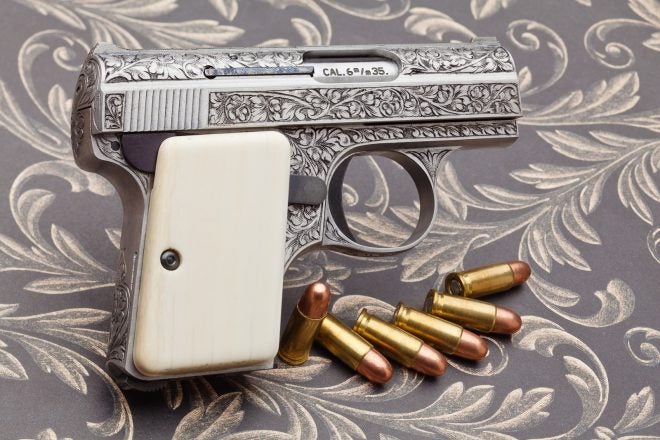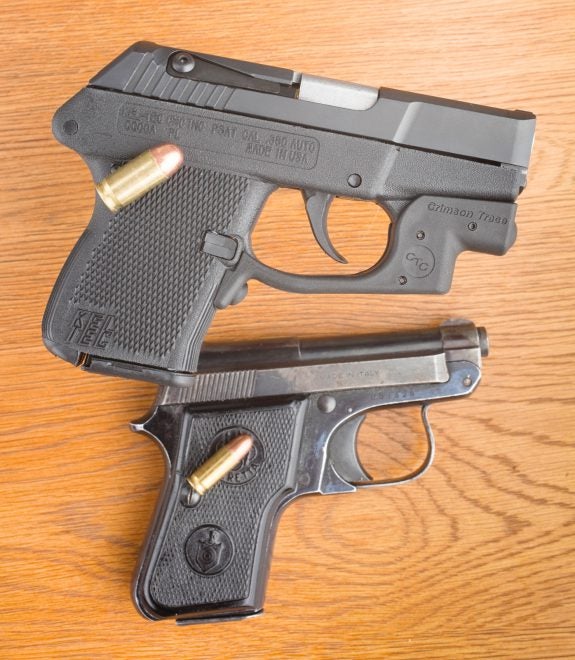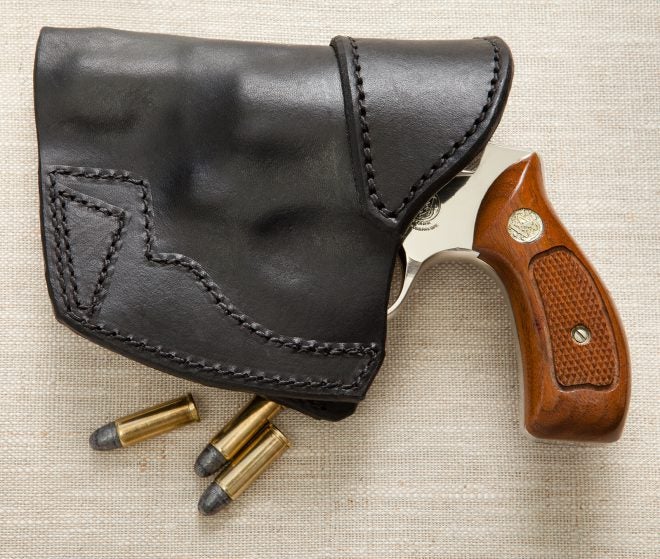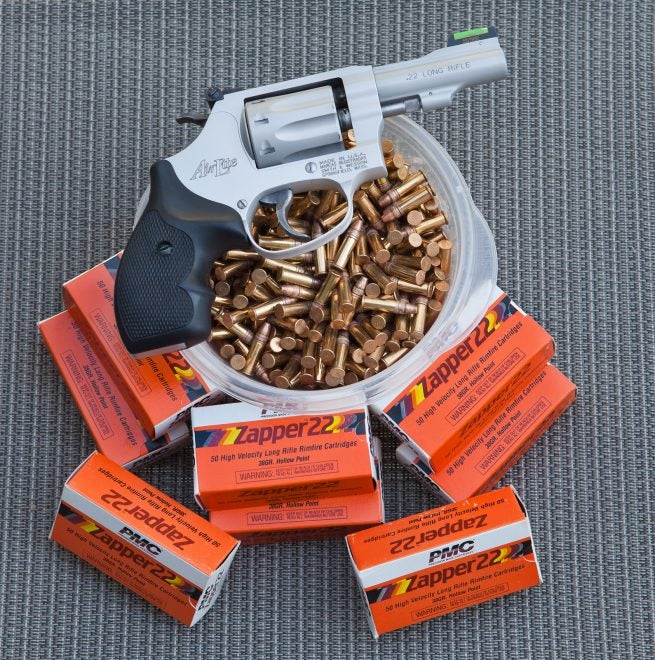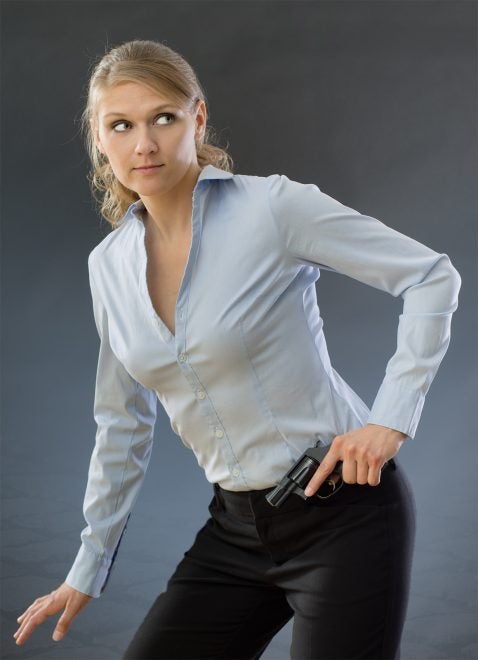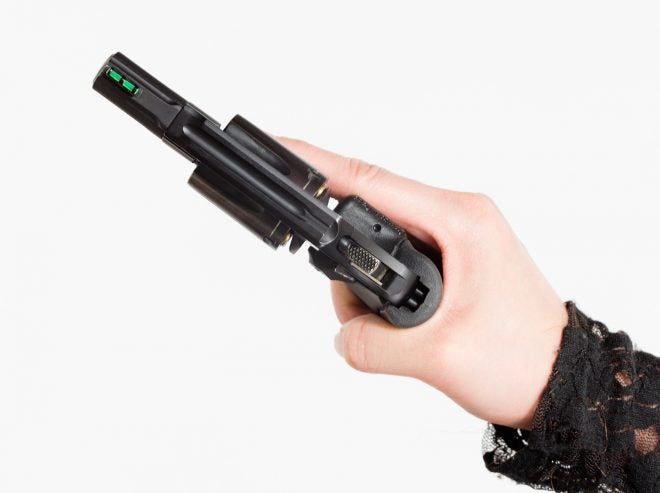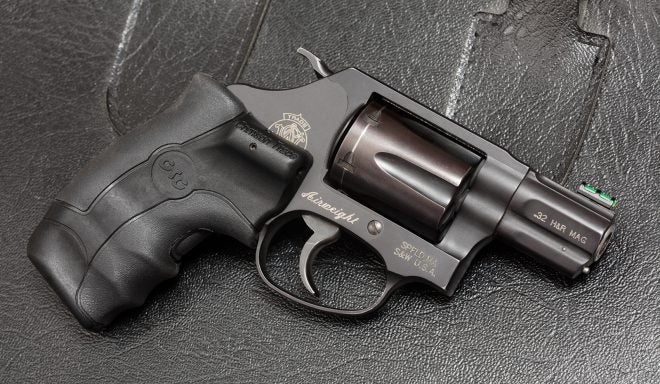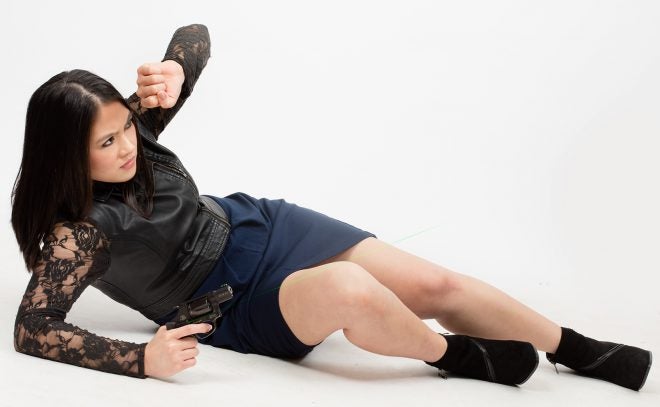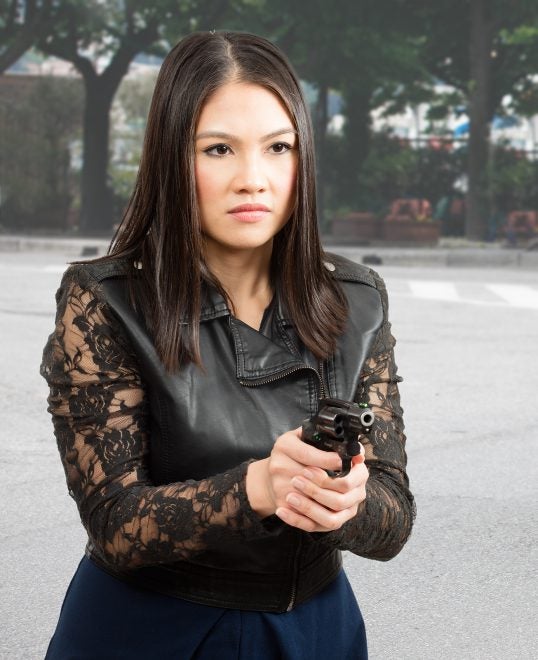Self-defense Firearm Selection for a Non-Shooter
Oleg Volk 05.08.16

We all have friends or family who should be carrying, are willing to carry, but aren’t well trained with pistol. For various reasons–old age, infirmity, lack of time, lack of opportunity, others–they are unlikely to get trained to the standard we’d like to see. Still, a firearm is a useful force multiplier even with limited training.
An understanding of legalities of carry, practice with drawing and presenting, and firing at close to intermediate ranges, all add up to more utility than not carrying at all would be.
The reasons for carrying despite reluctance can be several: a dire threat (such as a stalker), realization that kids require protection, urban unrest, and many others. Besides shooting practice, concealment becomes an issue. Few people who are lukewarm about carry are motivated enough to dress around the gun, so the weapon would have to shrink to fit their wardrobe.
Typical concealment firearms are subcompact pistols in 380ACP or 32ACP. Even smaller are 25ACP guns that, while not impressive in performance, are better than harsh words. Those pose two problems of their own: limp-wristing is far more likely with very light autopistols, and the manual of arms can be relatively complicated. Older small guns might not be drop-safe, either.
Certain tiny pistols, like the Beretta 950 shown above, offer easier loading with tipping barrels. In 380ACP, Sig P238 is a standout with low felt recoil and crisp trigger, but it does come with a manual safety. I found that most reluctant defenders find the manual of arms too complicated no matter which semi-auto was presented to them. The frustration of learning malfunction drills often chips away at the already limited degree of motivation showed by such learners.
Small revolvers are the other mainstream option. With them, the challenges are the trigger pull weight and the recoil. A J frame in 32S&W Long doesn’t kick much, and ammunition is relatively widely available. At a shade over 700fps with 90-grain bullet from a 2-inch barrel, it’s not greatly effective but improves on .22 rimfire.
While a viable option when used in ultra-light guns, .22LR is quite sub-optimal. To get reliable ignition, these guns use heavier springs than centerfire equivalents, so hand strength requirements are even greater. Further, quality control of most 22LR ammunition has slipped in the past five years, adding another argument against relying on it for defense.
The mainstay of small defensive revolvers, 38 Special, usually produces unacceptably harsh recoil to novices even in lightweight K frames, much less in airweight J frames. Having owned a 38Spl lightweight for exactly five shots, I can’t think of a more certain way to discourage range practice for the new shooters.
So, we are up against several limitations: weight, size, complexity of the manual of arms, recoil, and caliber. There’s not much of a point in carrying a weapon in caliber too small to stop anything bigger than a possum, nor in a gun with too much recoil to permit even occasional practice. One compromise that sat well with my specific user was a 2-inch J frame in .32H&R Magnum, model 341PD. Able to use weaker and cheaper 32S&W for practice, it uses 80gr to 95gr projectiles at 825fps to about 1000fps respectively from the short barrel. The muzzle blast and the recoil remain moderate, while terminal performance is around that of 380ACP. The reduction in the power of individual shots from 38 Special is offset but the addition of the extra round for the same cylinder size.
While ammunition production is limited to Hornady and Federal, the low volume necessary for practice made it practical to lay in reserves in advance. A typical range outing consists of around 30 to 40 rounds of 32S&W Long and a dozen rounds of 32H&R Magnum. In theory, the cylinder must be cleaned before carry after the shorter practice rounds to prevent extraction or chambering issues with the longer defensive cartridges, but the low volume of firing made it optional.
Optimizing the weapon to fit the small hands and the impatient temperament of the user made regular, if not very frequent, range practice a reality. But we ran into practical problems: even the weak recoil of the .32 caused discomfort due to the scalloped out backstrap of the grip. Further, the featureless black front sight integral to the barrel shroud was useless in less than ideal light, and only slightly better in daytime because of the poor eyesight of the shooter. The sight issue was solved by a gunsmith removing the sight blade and replacing it with a fiber optic tube. That improved the sight picture tremendously.
Next, the compact boot grips were swapped for Crimson Trace green laser grips. That accomplished two goals at once. The padded backstrap reduced felt recoil, and the semi-beavertail made higher hand placement possible for improved recoil control. It also enabled aiming without using the regular sights.
Lasers, like or dislike them, are pretty useful for aiming from retention or from unconventional positions. For example, a person knocked down and without eyeglasses can still shoot accurately at the fuzzy green spot on a fuzzy assailant. The ability to fire from retention doesn’t just reduce the possibility of a successful gun grab, but also lets the defender watch the foe’s hands and not just the upper torso. In a conventional stance with iron sights, the gun would block the view of the waistline where weapons might reside.
In the photo above, the laser beam was drawn in to illustrate its direction. In reality, absent powder fumes from previous shots, dust or heavy fog, lasers don’t scatter enough to be visible from the side. The faint glow around the emitter, as seen below, is about all that is visible.
The retention position has another benefit: it’s easier to keep steady for an extended period. A lot of self-defense situations get resolved without gunfire, but the defender gets to cover the threat for a while. This particular model of laser grips, 350G, runs off four batteries, reducing the risk of running out at the worst time.
The gunsmithing work and the laser grips more than doubled the cost of the firearm. However, considering that this is the one and only weapon for the specific user, an expense that makes it actually useful is justified. With S&W341PD being out of production, something like S&W642 CT would be the closest equivalent. Already equipped with laser grips and chambered for a more common cartridge, it would be substantially similar.
For lower recoil, use non-lead practice ammunition and defense ammunition. Both of the linked loads are optimized for short barrels and neither generates much kick even in relatively light snubbies.
Ruger SP101 in .327 Federal is another viable low-recoil option, though heavier and longer. Keep in mind that your own impatient shooter may need something entirely different for comfort. The person shown in the range photo at the start of this article spent a decade picking through various .22 handguns, then suddenly settled on a 9mm longslide, thanks to a competent and effective instructor. Other people have gone with full size vintage 32ACP pistols or with other, less mainstream choices. When it comes to important people who wish to carry but aren’t as motivated as we are, picking just the right firearm for them can mean a lot of trial and error and expense. But the results are worth it.
